Confused about coriander vs cilantro? Read on to discover the differences and similarities between these two herbs and learn how to use them in your cooking.
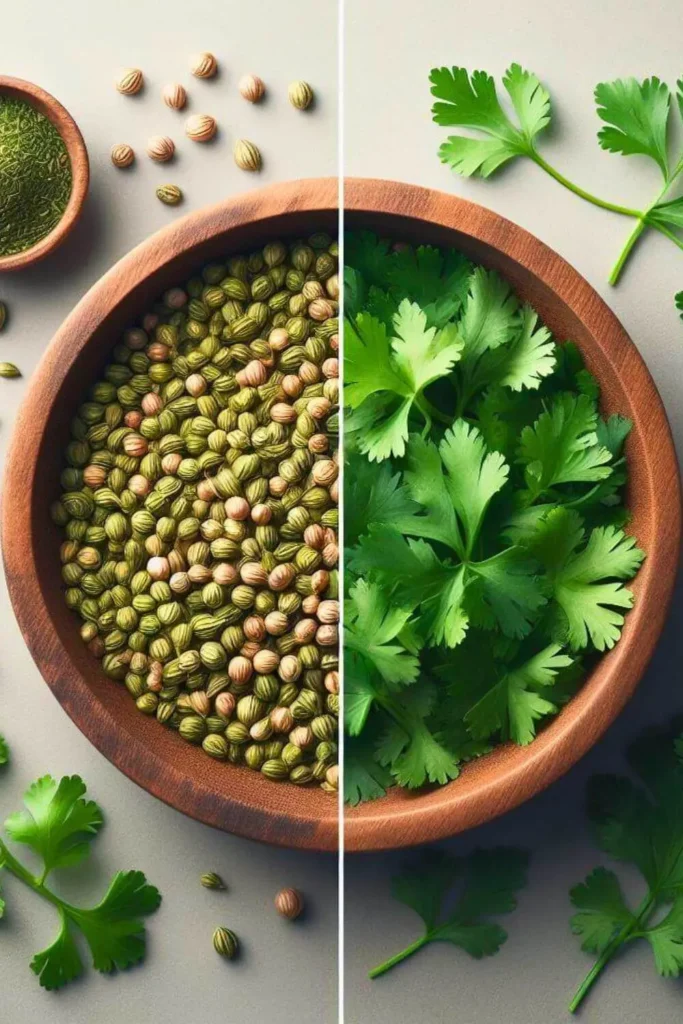
Coriander and cilantro are two popular herbs that are often used interchangeably in recipes. They both belong to the same plant, Coriandrum sativum, but are known by different names depending on where you live.
In the US, the term cilantro refers to the plant’s fresh leaves, while the dried seeds are called Coriander.
Whereas in the UK, Australia, India, and some other places, both the leaves and seeds are called Coriander.
In this article, we’ll be using the terms cilantro and coriander interchangeably to refer to the plant’s leaves and seeds.
Suggested Article: Best Coriander Substitute
What is Coriander?
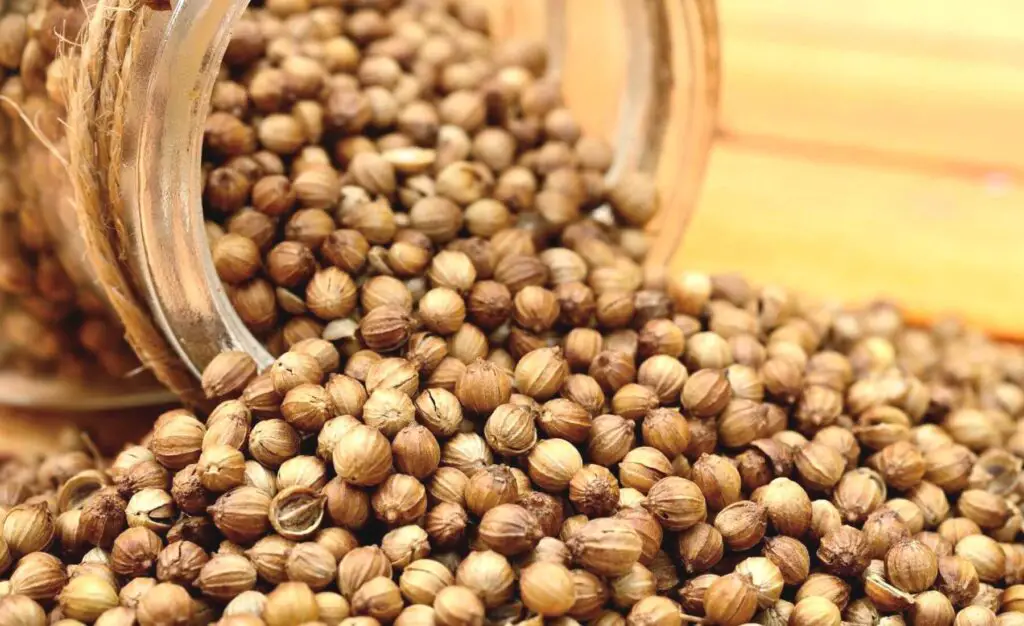
Coriander is the dried seeds of the coriander plant. Coriander seeds have a slightly sweet and tangy taste that is often described as warm and nutty.
You can use coriander seeds in a lot of recipes, such as curries, stews, soups, and marinades.
One interesting fact about coriander is that it has a long history of use in traditional medicine.
In ancient Egypt, people used coriander to help with digestion and to treat headaches. In Ayurvedic medicine, they use it to treat anxiety, inflammation, and digestive problems.
What is Cilantro?
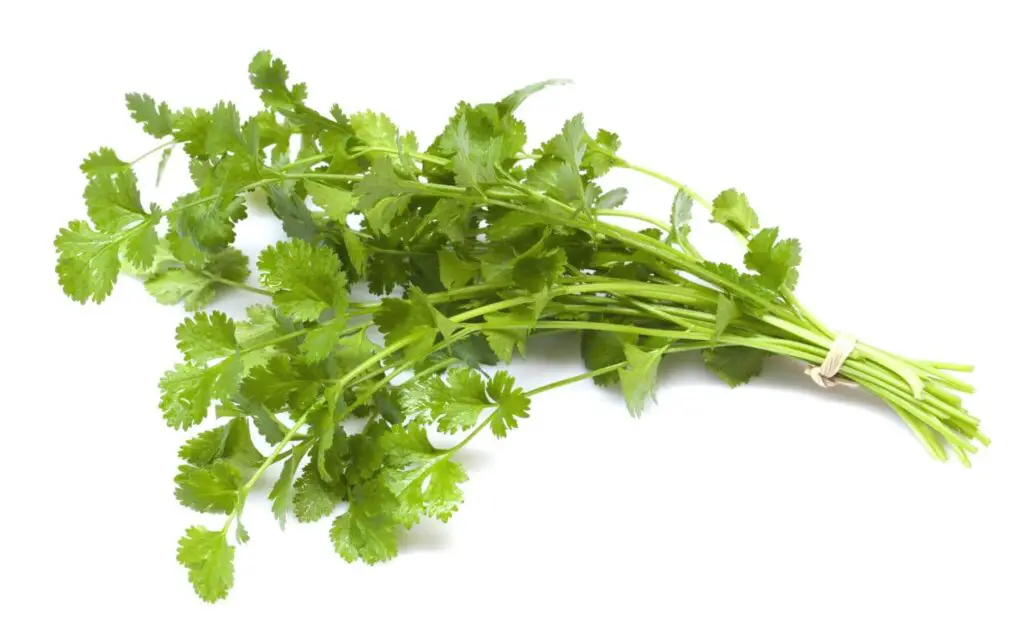
Cilantro refers to the fresh leaves of the coriander plant. These leaves have a strong, zesty taste that is often described as lively and invigorating.
Cilantro is a popular ingredient in many different types of food, such as salsas, guacamole, salads, and curries. Sometimes, cilantro is also used as a decoration or a final herb to add flavor to a dish.
Interesting Facts and Trivia,
Cilantro is often used as a natural breath freshener. Chewing on a few cilantro leaves can help to neutralize bad breath.
Different Parts of Cilantro and Coriander Plants
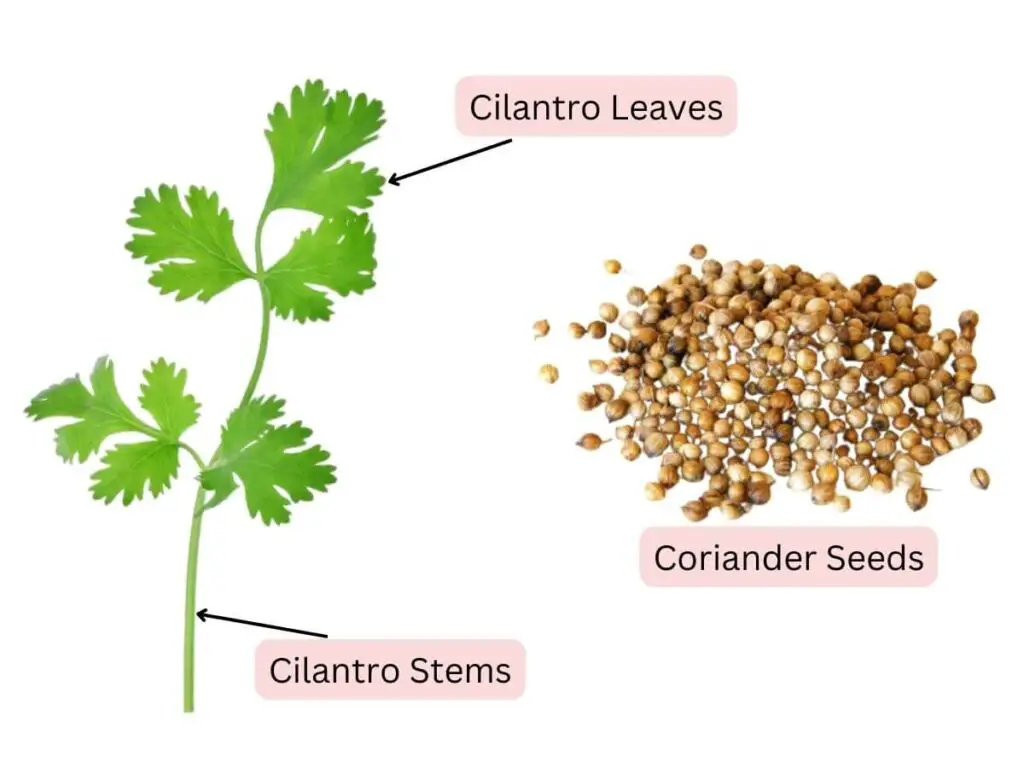
Here’s a breakdown of the 3 different parts:
1. Cilantro Leaves: Cilantro leaves are thin and have a bright, citrusy taste. You can use cilantro leaves to garnish dishes such as salsa and guacamole, as well as to add flavor to main dishes like curry or soup.
2. Cilantro Stems: Cilantro stems are thin and can be eaten, but they’re not used as much in cooking as the leaves. They have a similar taste to the leaves, but they’re not as strong. You can use cilantro stems to add a bit of crunch to dishes or as a garnish.
3. Coriander Seeds: Coriander seeds are small and have a warm, slightly sweet taste. They’re often used in spice blends like curry powder or garam masala. Coriander seeds can also be used to season roasted vegetables or meat dishes. You can either grind them up into a powder or use them whole.
What Is the Difference Between Coriander and Cilantro?
1. Appearance
One of the main differences between coriander and cilantro is their appearance.
Coriander seeds are small, round, and brown in color. They have a slightly rough texture and are often sold whole or ground into a powder.
Cilantro leaves, on the other hand, are bright green and have a feathery texture. They are often sold in bunches and can be chopped, minced, or torn into smaller pieces.
2. Taste and Flavor
Coriander and cilantro have distinct taste and flavor profiles.
The Coriander seeds have a warm, slightly sweet flavor with notes of citrus and nuttiness.
Cilantro leaves have a pungent, bright, and citrusy flavor that some people find polarizing. While some people love the taste of cilantro, others find it soapy or unpleasant.
3. Coriander vs Cilantro: Nutrient Comparison
According to USDA FoodData Central, coriander and cilantro have slightly different nutrient profiles. Here’s a comparison of the nutrients found in 100 grams of each herb:
| Nutrient | Coriander (per 100 g) | Cilantro (per 100 g) |
|---|---|---|
| Calories | 298 kcal | 23 kcal |
| Protein | 12.37 g | 2.13 g |
| Fat | 17.77 g | 0.52 g |
| Carbohydrates | 54.99 g | 3.67 g |
| Fiber | 41.9 g | 2.8 g |
| Calcium | 709 mg | 67 mg |
| Iron | 16.32 mg | 1.77 mg |
| Magnesium | 330 mg | 26 mg |
| Phosphorus | 409 mg | 48 mg |
| Potassium | 1267 mg | 521 mg |
| Sodium | 35 mg | 46 mg |
| Vitamin C | 21 mg | 27 mg |
As you can see, coriander is higher in calories, protein, fat, carbohydrates, fiber, calcium, iron, magnesium, phosphorus, and potassium than cilantro. However, cilantro is higher in sodium and vitamin C.
Culinary Uses of Coriander and Cilantro
Cooking experts use coriander and cilantro in various dishes, but they typically employ them in distinct ways.
Here are some of the most popular culinary uses of these versatile herbs:
1. Seasoning for meat and vegetables
You can use coriander and cilantro as a seasoning for meat and vegetables, adding a bright and flavorful kick to grilled or roasted dishes.
2. Flavoring for soups and stews
Often used in soups and stews, where their fresh, herbal flavor can help balance out richer, heartier ingredients.
3. Key ingredients in salsa and guacamole
Cilantro is a key ingredient in many Mexican and Southwestern dishes, including salsa and guacamole, where it adds a bright, fresh flavor that complements spicy peppers and creamy avocado.
4. Garnish for salads and tacos
You can use them as garnishes for salads and tacos, and they add a burst of color and flavor to the dish.
5. Flavoring for rice and grains
Coriander can be used as a flavoring for rice and grains, adding a subtle, nutty flavor that pairs well with a variety of cuisines.
Health Benefits of Coriander and Cilantro
According to the Journal of Medicinal Food, Food Chemistry, and International Journal of Food Sciences and Nutrition, coriander, and cilantro have been found to offer numerous health benefits. Here are some of the key benefits:
1. Anti-inflammatory properties
Both of these herbs contain compounds called linalool and limonene, which exhibit anti-inflammatory properties. These properties can help reduce inflammation in the body and may be beneficial in managing conditions such as arthritis and other inflammatory disorders.
2. Digestive Health
Compounds found in these herbs can stimulate digestive enzymes and promote the production of digestive juices, helping to alleviate digestive issues such as bloating, gas, and constipation.
3. Antioxidant properties
Both herbs contain antioxidants, which are important for protecting the body against oxidative stress and free radical damage. Antioxidants can also help to reduce the risk of chronic diseases such as heart disease, cancer, and Alzheimer’s disease.
4. Blood sugar control
Coriander and cilantro may help to regulate blood sugar levels. Compounds found in these herbs can stimulate the production of insulin and promote the uptake of glucose by the cells, which can help to prevent spikes in blood sugar levels.
5. Immune system support
Both herbs are rich in vitamin C, which is essential for a healthy immune system. Vitamin C can help to boost the production of white blood cells, which are important for fighting off infections and diseases.
How to Store Coriander and Cilantro
To keep coriander seeds fresh, store them in an airtight container in a cool, dry place. You should use ground coriander within six months, while you can store whole coriander seeds for up to a year.
And to keep cilantro fresh, store it in the refrigerator in a plastic bag or wrapped in a damp paper towel. You can store cilantro in the refrigerator for up to a week, but use them within a few days of purchase for best results.
Recipes to try:
- Authentic Indian Chicken Curry Recipe
- Paneer Butter Masala Recipe
- Salad Recipe for Weight Loss
- Creamy Lemon Chicken Recipe
- Pepper Garlic Prawns Recipe
Coriander vs Cilantro: What are the Differences and similarities?
Ingredients
What is Coriander?
- Dried seeds of the coriander plant
What is Cilantro?
- Fresh leaves of the coriander plant
Different Parts of Cilantro and Coriander Plants
- Cilantro Leaves
- Cilantro Stems
- Coriander Seeds
Coriander vs Cilantro – Appearance
- Coriander seeds are small, round, and brown in color.
- Cilantro leaves are bright green and have a feathery texture.
Coriander vs Cilantro – Taste and Flavor
- Coriander seeds have a warm, slightly sweet flavor
- Cilantro leaves have a pungent, bright, and citrusy flavor
Coriander vs Cilantro – Interchangeable Use
- 3:1 ratio when substituting coriander for cilantro
Culinary Uses of Coriander and Cilantro
- Seasoning for meat and vegetables
- Flavoring for soups and stews
- The Key ingredient in salsa and guacamole
- Garnish for salads and tacos
- Flavoring for rice and grains
Coriander and Cilantro: Storing
- Use ground coriander within six months but whole coriander seeds for up to a year
- Can be store cilantro in the refrigerator for up to a week but should use them within a few days of purchase
Instructions
- In this card, you got the outline on Coriander vs Cilantro
- For details info, please read the full article
- Thank you
In conclusion, the great Coriander vs Cilantro debate rages on!
While they come from the same plant, they have different names and different tastes in different parts of the world. Coriander has a complex flavor. On the other hand, cilantro has a more polarizing taste.
So next time you’re at the grocery store, don’t hesitate to pick up a bunch of fresh cilantro or a jar of coriander seeds and try them out in your favorite recipes.
FAQs
People often toast and grind coriander seeds before using them in spice blends, marinades, and rubs. People also commonly use coriander seeds in pickling and preserving.
People often use cilantro leaves and stems fresh and add them to dishes just before serving. They commonly add cilantro to salsas, guacamole, curries, and soups.
Yes, it is! The same plant, Coriandrum sativum, produces coriander and cilantro, and people often use the leaves and stems interchangeably in recipes. However, it’s important to note that coriander has a slightly different flavor than cilantro, so it may not be an exact substitute.
TRIED THIS RECIPE?
We love to see all the deliciousness!
Tag @gravyflavourofficial on Instagram and hashtag it #gravyflavourofficial
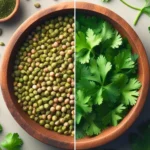

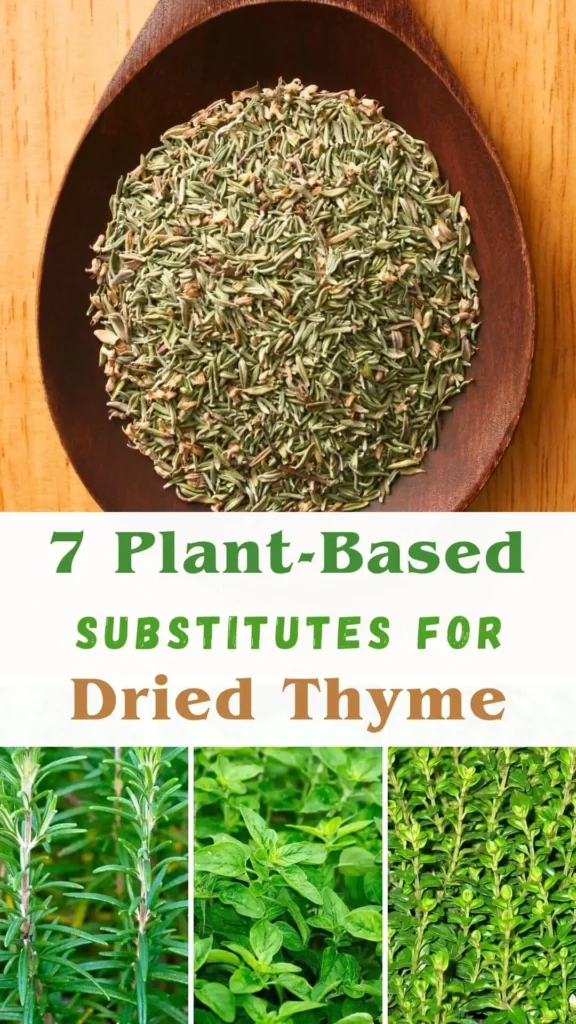
Very interesting and complete, great job
Wow! I never knew this before! Thanks for all the good info!
I am unfamiliar with coriander. This is helpful. Love to cook and grow cilantro
Very insightful article. I appreciate being able to have the differences between cilantro and coriander detailed. Admittedly, I use cilantro much more than coriander. However, I am motivated to use both for all of the health benefits. Thanks.
Nice article! Love anything with food information and breakdowns!
Very informative and include a lot of information about both. Thank you for sharing!
I knew these were the same plant but I get it now why people get confused. I love cilantro and use it all the time. I do use coriander in Indian dishes. Thanks for this thorough explanation.
I love cilantro and I never knew these differences! Thank you for educating!
Fascinating and thorough. So I guess one could munch on a few seeds or the leaves (as suggested) for inflammation and blood sugar control. How fun! This is a very useful post. Thank you!
Very nice article! I. Never knew the differences
I use the leaves almost daily, I can’t live without it.
I both of these herbs/spices in my cooking. Corriander is used a lot in many Indian cuisines. It adds a lot of flavor to meat dishes. I appreciate you sharing their health benefits. Thanks for sharing.
Both of these herbs have a rich, savory flavor that enhances the taste of almost any dish. I always use these herbs together in my cooking, as I find the flavor combination to be really delicious.
Huge cilantro fan! I have 3 plants sitting on porch ready to go into the ground. I use it mostly in salsa and guac. Love it!